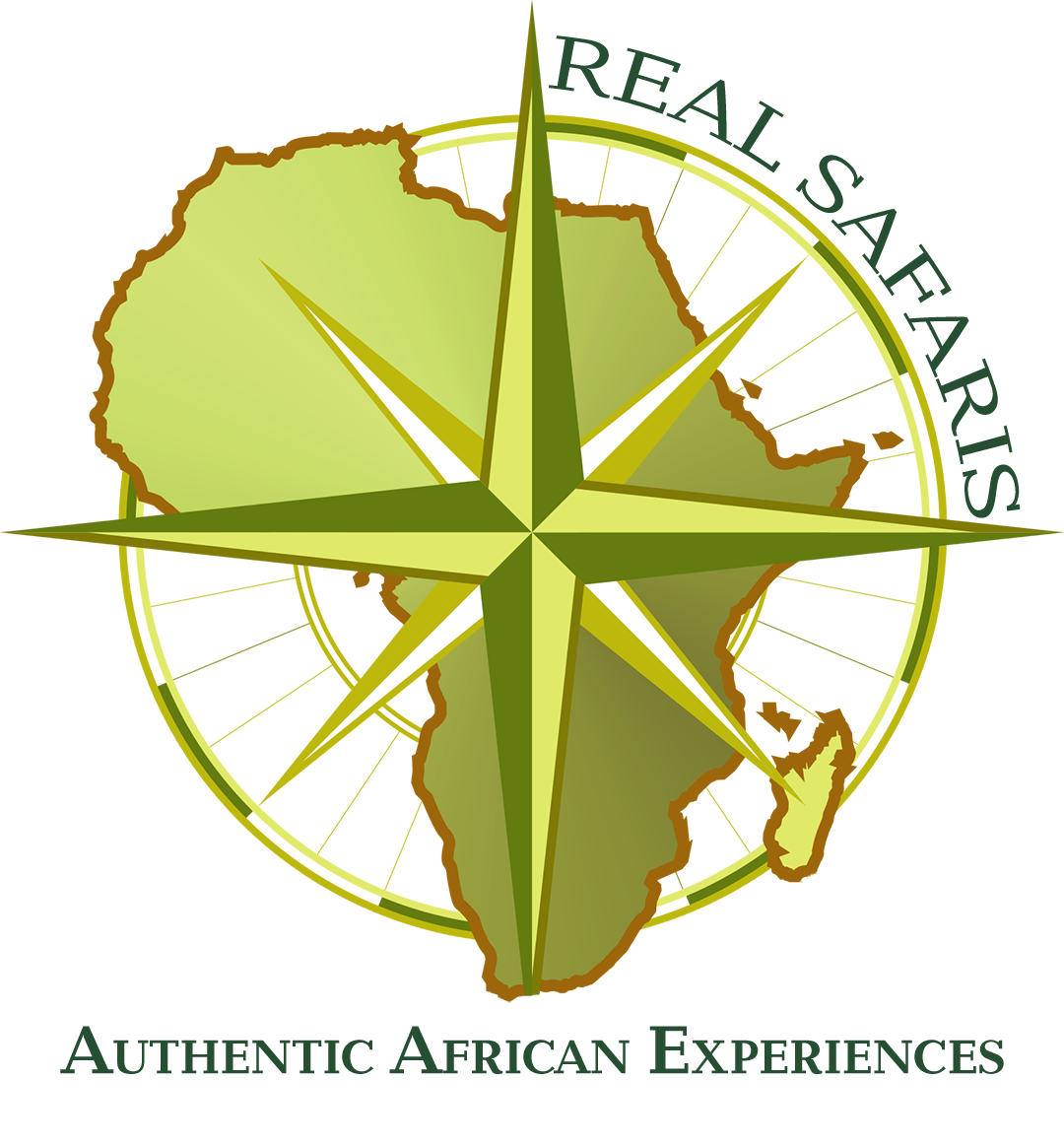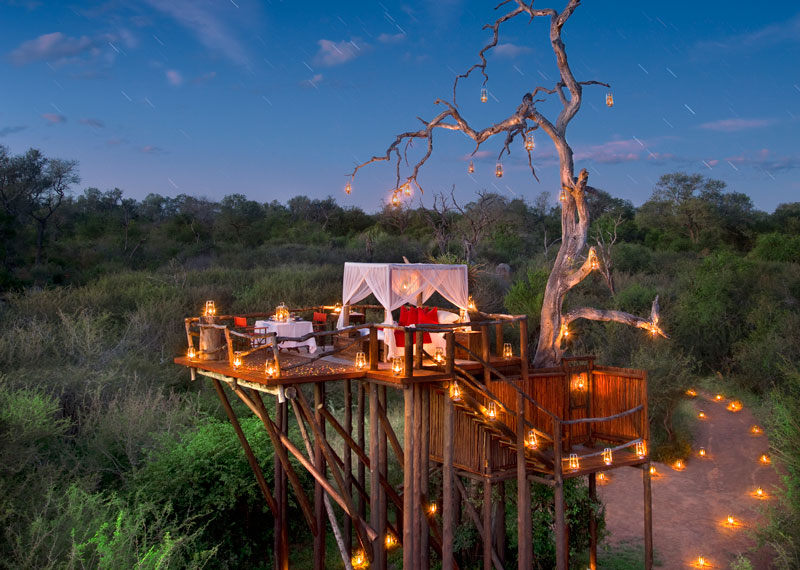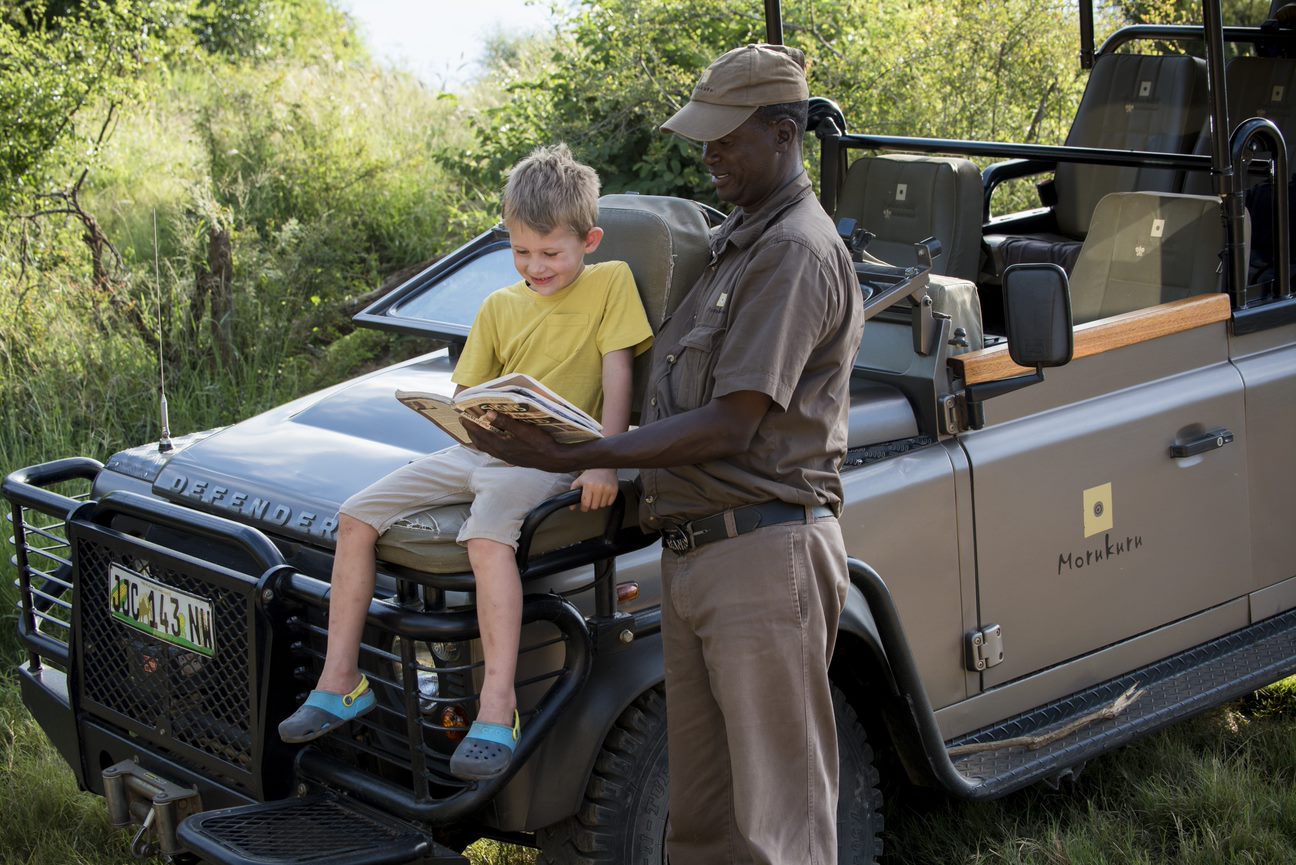SOUTH AFRICA
South Africa is beguiling in its variety. It’s confident, cosmopolitan Cape Town but it’s also big game viewing in Kruger National Park, the farmsteads and valleys of the Winelands, and the remote, wild Elephant Coast.
South Africa
Sor many first time visitors to Africa, a top priority is ticking off the so-called Big Five: lion, leopard, buffalo, elephant and rhino. South Africa offers many excellent opportunities to do this, and it is the easiest place in Africa to see rhinos, since it supports more than 90% of the continental population of these endangered creatures. It is also the African country best suited to self-drive safaris.
No other country in Africa, and few anywhere else in the world, offer a diversity of attractions to rival South Africa. South Africa is one of the continent’s finest Big Five destinations. The likes of the Kruger National Park and Hluhluwe-Imfolozi Game Reserve have all the amenities and attractions one would come to expect from world-class wildlife destinations. While adjoining private reserves such as Sabi Sand and Phinda rank among the world’s most luxurious venues for all-inclusive guided safaris. Importantly, when it comes to families with young children, South Africa is unique in that several of its most alluring Big Five reserves – for instance Madikwe, Pilanesberg and Addo Elephant National Park – lie within regions that are 100% free of malaria.
South Africa today displays a unique cultural blend of African, European and Asian influences. There’s the brash economic powerhouse of Johannesburg and its altogether more stately coastal counterpart Cape Town, as well as the curry houses of Indian-influenced Durban, and the French vinicultural tradition and Dutch-derived architecture that characterises the winelands around Stellenbosch. Elsewhere, traditional Zulu and Ndebele cultural villages pay homage to the country’s indigenous cultural diversity, as does the incomparable wealth of prehistoric rock art found in the uKhahlamba-Drakensberg.
A significant part of modern South Africa’s fascination is the immense progress it has made as a unified nation since the first democratic election was held there in 1994, a progression placed in sobering historical perspective by visit to Johannesburg’s Apartheid Museum or Cape Town’s District Six Museum. At the opposite end of the immediacy scale, the three-million-year-long hominid fossil record preserved in the ancient limestone caverns of Gauteng’s Cradle of Humankind has no peer elsewhere in the world.
All in all, South Africa is a country like no other.
WHEN TO GO TO South africa
There isn’t one best time to visit South Africa: it’s a year-round destination due to its varying regional climates and wildlife opportunities.
The Cape has beautiful, hot, dry weather in its summer months between November and February, with temperatures between 23℃ and 26℃. The best time to visit the Cape for whale watching is between July and November.
The northern regions of South Africa can be rainy from November to February, but this can be the best time to travel for birding. The cooler winter months from May to September bring superb conditions for viewing big game.
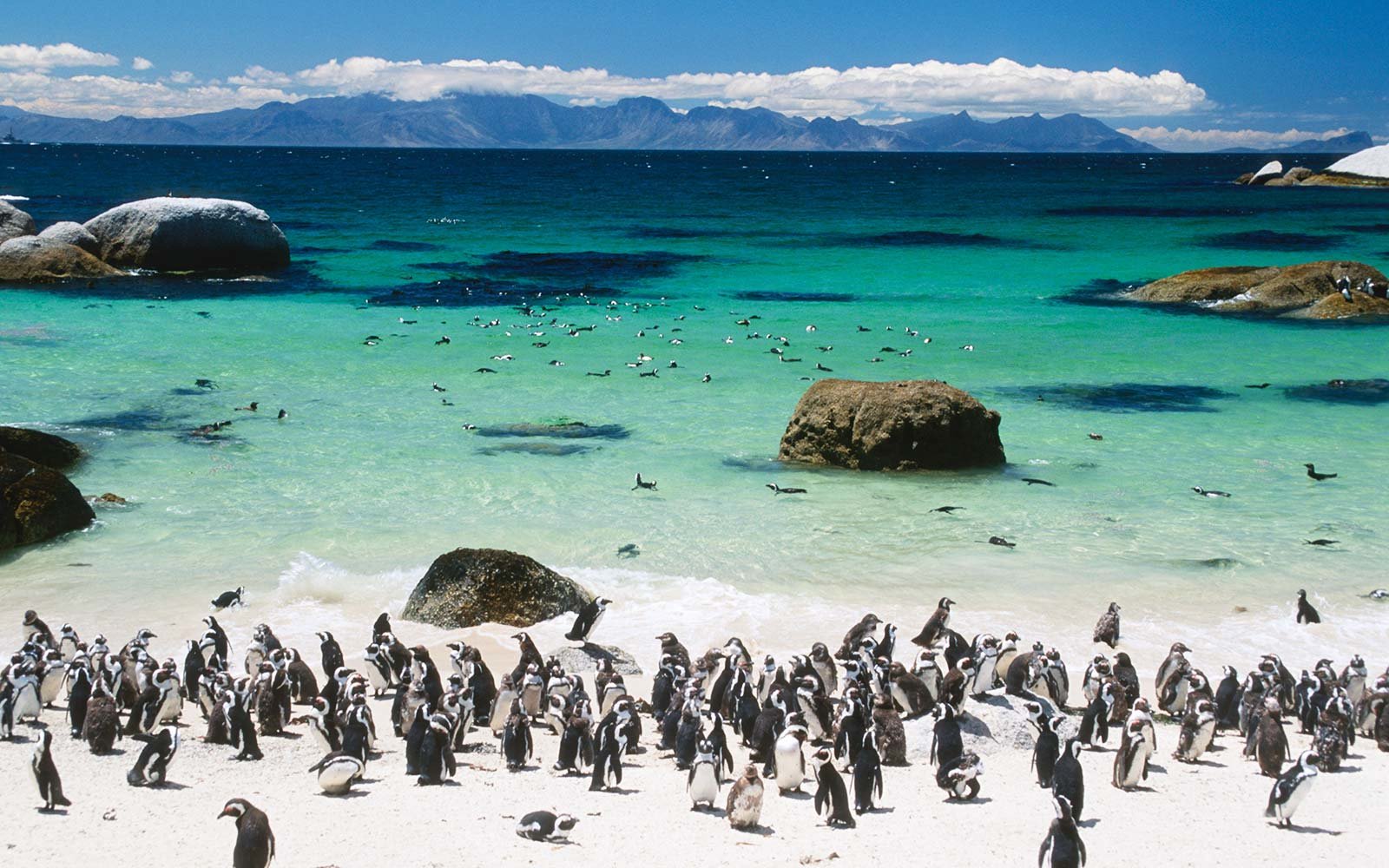
HIGHLIGHTS
Kruger Park
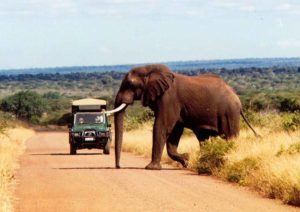 Kruger Park: A fierce red sun kisses the horizon as the last rays of daylight bathe the camelthorn trees around you in a warm glow. At the waterhole in front of you a mother elephant helps her newborn take a mud bath while an elegant giraffe kneels nearby for a drink. You sip a sundowner and watch as a troop of baboons groom each other, a pod of hippo snort in the water and a herd of impala antelope nibble away at an early dinner on a grassy embankment. As the heat of the day fades, a palpable serenity descends on the world and another magnificent African day draws to an end. This is not just some idyllic scene from a nature documentary; this is daily life in the Kruger National Park.
Kruger Park: A fierce red sun kisses the horizon as the last rays of daylight bathe the camelthorn trees around you in a warm glow. At the waterhole in front of you a mother elephant helps her newborn take a mud bath while an elegant giraffe kneels nearby for a drink. You sip a sundowner and watch as a troop of baboons groom each other, a pod of hippo snort in the water and a herd of impala antelope nibble away at an early dinner on a grassy embankment. As the heat of the day fades, a palpable serenity descends on the world and another magnificent African day draws to an end. This is not just some idyllic scene from a nature documentary; this is daily life in the Kruger National Park.
Madikwe
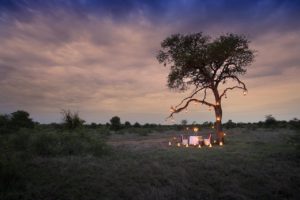
Madikwe Game Reserve is currently the fifth largest game reserve and is also one of the lesser- known parks in South Africa. This makes it a hidden- gem as it is regarded as one of the best conservation areas in Africa and offers the Big 5 in a 680 km2 park (750 km2 including newly incorporated privately owned land).
The park offers a number of luxurious lodges as well as community lodges in a malaria- free zone. Madikwe offers one of the best possible big 5 photographic experiences ever in Africa and the lodges in Madikwe are superb.
Sabi Sands/ Sabi Sabi
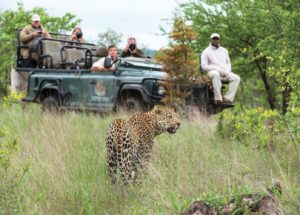 The Sabi Sand Private Game Reserve shares a 50km unfenced border with Kruger National Park and offers the best wildlife viewing in South Africa. The area is divided into individual private game reserves, all offering the ultimate Big Five experience. The reserves offer an exclusive experience with luxury accommodation, great service and excellent food.
The Sabi Sand Private Game Reserve shares a 50km unfenced border with Kruger National Park and offers the best wildlife viewing in South Africa. The area is divided into individual private game reserves, all offering the ultimate Big Five experience. The reserves offer an exclusive experience with luxury accommodation, great service and excellent food.
Within Sabi Sands, deep in the African bushveld, you can find the Sabi Sabi Private Game Reserve. This award winning private game reserve offers world-class standards in luxury accommodation, exceptional close wildlife encounters, personal service and delicious cuisine.
The reserve is home to the ‘Big Five’ (elephant, rhino, lion, leopard and buffalo), as well as cheetah, wild dog and hundreds of other species of animals, birds and plants indigenous to the area. Highly trained and experienced rangers and trackers ensure that your safari experience ranks amongst the best in the world. You can look forward to fantastic close-up experiences with Africa’s wildlife on every game drive.
The best wildlife viewing time is during winter, which is also considered the ‘low season’. Fewer crowds make this an appealing time for a visit. It is also the Dry season which lasts from May to September.Animals are easy to spot during the dry months as foliage becomes less abundant and they gather around rivers and waterholes. September is the most attractive month to visit. It is also the least cold of the winter months.
Capetown
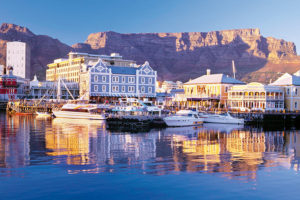
Sandwiched between the Atlantic Ocean, the Indian Ocean and Table Mountain, Cape Town attracts more visitors than any other place in Africa, with its natural setting, cosmopolitan culture and Mediterranean climate providing the appeal. Scaling Table Mountain – by foot or cable car – rewards you with panoramic views over the mountains, city and both oceans. You can also explore Cape Town’s turbulent history with a historical tour and a visit to Robben Island. Leisurely afternoons might involve browsing the shops and restaurants at Victoria & Alfred Waterfront, or relaxing on Camps Bay’s beach.
Winelands
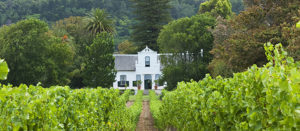
Drive just an hour east of Cape Town and you reach vine-woven valleys slotted between great knuckle-like mountains. This is South Africa’s Winelands region, one of the first areas of the country settled by Europeans and a hub for all things food and drink.
The region’s three main towns — Franschhoek, Stellenbosch and Paarl — form a triangle that you can easily visit all in one trip. Our South Africa specialists have done so many times, and can give you tips on what to see and do, creating a Winelands itinerary that suits your interests.
It almost goes without saying that wine tasting usually forms a significant part of your stay. Many vineyards offer guided tours and tastings, from smaller boutique wineries to sprawling estates. You can cycle between them or take the Wine Tram from Franschhoek, hopping on and off at different estates as and when you please.
The food scene also thrives here, and many wine estates have their own restaurants where you can enjoy food-and-wine pairings. Alternatively, take a guided food tour of Stellenbosch, sampling everything from biltong (dried cured meat) to koeksisters (a sweet, syrupy pastry).
Stellenbosch is also a good place to explore the region’s history. It’s South Africa’s second-oldest European settlement, established in 1679 by Dutch Governor Simon van der Stel. You can soak up its colonial heritage, from the dazzling-white Cape Dutch buildings to the Victorian and Georgian mansions set along oak-lined streets.
Waterberg
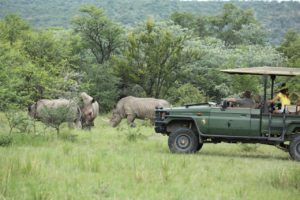 The Waterberg is an exceptional and internationally recognised natural heritage site and is a unique wilderness area of South Africa yet to be fully discovered. The first English and Boer Voortrekkers traveled up from the Cape in their wagons in the 1850’s. Its beauty lies in its superb vistas, mountain gorges, crystal clear streams and rolling bushveld hills. The Waterberg’s charismatic beauty and bio diversity which covers 14500 sq km has been recognised worldwide in being awarded the status of a World Biosphere reserve by UNESCO and the only savannah biosphere in the world.
The Waterberg is an exceptional and internationally recognised natural heritage site and is a unique wilderness area of South Africa yet to be fully discovered. The first English and Boer Voortrekkers traveled up from the Cape in their wagons in the 1850’s. Its beauty lies in its superb vistas, mountain gorges, crystal clear streams and rolling bushveld hills. The Waterberg’s charismatic beauty and bio diversity which covers 14500 sq km has been recognised worldwide in being awarded the status of a World Biosphere reserve by UNESCO and the only savannah biosphere in the world.
It’s size is equivalent to 80% of the Kruger National park and approximately 70% has already been designated a conservation area and home to the Big 5 and more, Sable and Roan antelope (rarely seen anywhere else today) are an iconic species of the area and a must see! The Waterberg is immensely rich in cultural, archaeological and biological diversity and has a fascinating history. It has been inhabited for at least 2000 years with the earliest people being the San Bushmen. There are numerous archaeological sites and bushman paintings showing evidence of these hunter gatherers.
The Waterberg is also home to the incredibly beautiful Marakele National Park which today hosts one of the world’s largest breeding colonies of the endangered Cape Vulture. These magnificent birds nest on the cliffs of the Santech towers which is the highest point in the Waterberg and boasts some of the best vistas imaginable.
Blue Train/ Rovos Rails
Travelling on the Rovos Rail or the Blue Train is partly a luxurious and grand way to cross the continent of Africa and the chance to experience some living history.
The Blue Train
This moving five-star hotel takes its passengers through the breathtaking countryside of South Africa. The Blue Train operates on two routes: Pretoria – Cape Town and Pretoria – Hoedspruit. The Blue Train takes you from Cape Town to Pretoria in 27 hours, and has been known for its excellent hospitality since 1946.
The Blue Train offers two different types of suites: The Deluxe Suite and The Luxury Suite. The Deluxe Suite, measured 4 by 2 metres, contains a double bed, a bathtub with handheld shower, individually-controlled airconditioning and floor heating. The Suite will transform from elegant and relaxing lounge during the day to a subtly-lit bedroom during the night. The Luxury Suite extends the offering from a Deluxe Suite even further. This suite, which is measured 5 by 2, offers twin or double-beds, a luxurious bath tub and digital interactive entertainment system (music, DVD/Blue-Ray).
The entire train is fitted with Wi-Fi, offers elegant lounges and superb dining. Relax with a cognac and a Cuban cigar in the Club Car, or breeze into the Lounge Car for an afternoon High Tea.
All of the carriages are restored rolling stock from a bygone era of rail travel, and the dark wood and period fittings of your cabin will take you back to a time when the journey was as important as the destination. Whether you are getting to know your fellow passengers in the convivial surroundings of the observation car, or enjoying a sumptuous dinner with the finest silver service, your time on the train will pass all too quickly.

The main routes of Rovos Rail, which is often referred to as the most luxurious train in the world, are Cape Town – Dar Es Salaam, Pretoria – Swakopmund, Pretoria – Cape Town, Pretoria – Durban and Pretoria – Victoria Falls. The journey from Pretoria to Cape Town takes 2 nights/50 hours, and include a visit to Matjiesfontein and the Diamond Mine Museum.
The train offers 3 types of suites: Royal Suites, Deluxe Suites and Pullman Suites. The Pullman Suites (+/- 7 square metres) are equipped with comfortable sofa-seats during the day, and a double or twin bed in the evening. They have an en-suite bathroom with shower. The Deluxe Suites (+/- 10 square metres) have a twin or double bed, a lounge area and an en-suite bathroom with shower. The Royal Suites, which take up half a carriage, have their own private lounge area and a bathroom en-suite with a Victorian bath and separate shower. With its wood panelling and period Edwardian features, this suite will give you the ultimate luxury travel experience.
All the suites mentioned above have a bar fridge filled with beverages, and room service is available 24/7. Furthermore, the train offers a beautiful pre-1940 dining car, lounge cars and an observation car at the back.
Main differences
On some routes, Rovos Rail operates with a vintage steam locomotive, giving you a very unique travel experience. Rovos Rail also operates on more routes than The Blue Train. Also the most popular route, Pretoria – Cape Town, takes a day longer with Rovos Rail and is thus more expensive. Both offer the same facilities and both stop at the old village of Matjiesfontein, but the Royal Suite of Rovos Rail is probably incomparable. Both trains have individually-controlled air-conditioning in the suites, but only with Rovos it is possible to open the windows. Contrary to The Blue Train, the trains of Rovos Rail are not equipped with Wi-Fi. What both trains have in common: They will give you an unforgettable experience of ultimate luxury travel through the ever-changing scenery of South Africa.
Our favorite places in south africa
WATCH THE VIDEO
WHAT ARE YOU WAITING FOR?
Contact us if you’re ready to book your safari or to get additional information.

